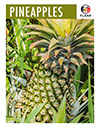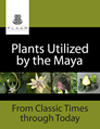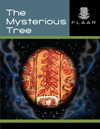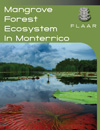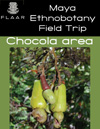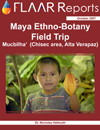We have been looking for the tree Quararibea funebris for five years. We had a project with the head biologist at the Parque Nacional Tikal for two years (circa 2011-2013) and we found one large tree but had ONLY ONE SINGLE FLOWER the day we were in Tikal that month.
With the help of Regina de Riojas, we found three Quararibea funebris trees in the Costa Sur, but they had only seed pods the day we were there! Plus these trees are young, so when they had flowers in 2015, it was only for a few days (and only a few flowers). I was in Ohio sorting and packing about 6000 books to ship to Guatemala that week, so this library would be available to Guatemalan students, scholars, and interested lay people. So I was not able to get to the Costa Sur to photograph even this handful of Molinillo flowers.
So still after five years of field trips, we do not yet have a good photo archive of the super important flowers of Quararibea funebris.
Whenever we are looking for the tree, we ask the local people for "molinillo" since the botanical names are not used by people in villages or remote areas. But every time we ask, they show us a laurel tree. This happened again two days after Christmas (2014) on the Costa Sur.
So we began looking for a more realistic name. "Madre de Cacao" and even “Rosita de Cacao” does not work because most local people think we are asking for the other common cacao shade tree (Gliricidia sepium, also used to shade coffee). We still do not have a Q'eqchi' Mayan name for the tree since none of our Q'eqchi' Mayan speaking plant scouts know this tree.
 |
|
Seed pod of Quararibea funebris, molinillo, Rosita de cacao, Costa Sur area of Guatemala.
|
As I did more research, I found out two aspects of molinillo as a tree name:
- First, there are many different trees whose wood is used to stir beverages.
- Second, there are many different trees whose name is laurel.
The molinillo that we are looking for is a stick used to stir cacao drinks
Molinillo is a stirring stick. Wikipedia also suggests the word whisk. Some people call such a thing a swizzle stick. The images for molinillo in Google images are, however, not the shape found naturally as thin young branches of certain trees. The molinillo used by the rural Maya (and probably rural Aztec and others) is not carved, it is simply a natural joint towards the end of a branch.
Not one single Google return for molinillo Maya chocolate shows a molinillo in the style of sprouting branches! 100% of the Google returns show the carved ones. It would be a help if archaeologists could find more images of pre-Columbian molinillos, and if ethnographers could find out which size and shape originates in which region(s) of Mesoamerica. A molinillo is an artifact of Maya culture and would be a pertinent thesis topic (not complicated enough to be a PhD dissertation or even MA thesis topic, but could be for an undergraduate thesis).
 |
| More seed pods of Quararibea funebris, molinillo, Rosita de cacao, Costa Sur area of Guatemala. |
 |
|
Here are the seed pods of Luehea candida. This seed pod is also used as a molinillo elsewhere in Mesoamerica. You attach a stick to the hard wood-like seed pod, and use the “wings” of the open dry pod to create froth for you cacao drink. The Luehea candida tree is common in the hills overlooking the Rio de los Esclavos. Each Luehea candida tree is filled with lots of large pale yellowish flowers. There are always a few dried seed pods even when the tree is filled with flowers. Or, you can find a few dried pods on the ground under the tree. The Luehea candida tree is known as algodoncillo, trompo, or cajetilla (OFI-CATIE) (depending on where you are in Guatemala, and what kind of background the person has who you ask). |
Molinillo that we are looking for is not Luehea candida (Moc. & Sesse ex DC)
In Guatemala is also named Cotonron, tapasquit or yayo (OFI-CATIE:573).
Molinillo for chocolate is definitely not Hura crepitans
This tree is named molinillo (because perhaps of its seed pod shape). But almost everything about this tree is toxic, especially the seed pod sap. I am not sure it would be a good idea to stir your cacao with Hura crepitans (besides, this is not the species in Guatemala, but the species lower south in Central America). Hura crepitans is known as sandbox, jabillo, Euphorbiaceae, Spurge Family.
The Hura species which is in Guatemala is Hura polyandra, a plant with flowers of interesting shapes (male flowers and distinct separate female flowers). The seed pod is like a hand granade.
Molinillo that we are looking for is not laurel
The day after Christmas 2014 we again asked local people where to find molinillo and they took us again to a laurel tree (Boca Costa, near the base of one of the volcanoes southwest of Lake Atitlan).
There are several trees named molinillo, or you could say, there are several trees whose branches make molinillo sticks for stirring (frothing) chocolate.
One is "laurel" as it is called by K'ekchi' Mayan speaking people in Guatemala. Laurel of course is not a K'ekchi' Mayan word; it is international (in this case used in Spanish-speaking Latin America).
The Laurel Family is Lauraceae. In the monograph on trees of Belize, the following species are recorded with the name "laurel." On these, one is called Laurel Negro (black laurel):
- Beureria oxyphylla Standl.
- Cordia alliodora (Ruiz & Pavon) Cham.
- Cordia Gerascanthus L., Laurel negro.
- Luehea candida (Moc. & Sesse ex DC)
- Nectandra glabrescens Benth. (Standley and Record1936: 142ff).
- Nectandra sanguinea Rottb.
- Phoebe helicterifolia Mez.
The molinillo we are looking for is also named Rosita de cacao
One possible Nahuatl name for Quararibea funebris is Poyomatli* but Google returns also offer another different Nahuatl term, Cacahuaxochitl (Wikipedia). Best to ask a Nahuatl linguist since half of what is on the Internet is copy-and-paste from "content farms" who have no actual factual knowledge: they just try to get into search engines to sell clicks for commercial advertising.
Poyomatli is the word used by Wasson (1983) in discussion of hallucinogenic plants of the Aztec. Further research would be useful in Sahagun, Schultes and Hoffmann (1982), etc. However our interest is to learn how many different trees can produce a twirling stick to stir cacao. Originally I naively assumed that Quararibea funebris was the only source of a stirring stick. Now I am open to suggestions that other trees may also produce a stirring stick. But how many of these were used to stir specifically cacao beverages remains to be seen.
A brief introductory bibliography on trees named molinillo
We have a lot more research to accomplish, but here are some items for suggested reading.
Field Museum of Natural History, Pub. 350, Botanical Series Vol. XII.
- 2003
- Árboles de Centroamérica: un manual para extensionistas. Oxford Forestry Institute, CATIE (OFI-CATIE).
http://www.arbolesdecentroamerica.info/index.php/es/species/item/download/168_5e49b4bf7d1f55ba7a8750f586fe645d
- 2000
- Hura crepitans L., Molinillo, jabillo, sandbox. USDA Forest Service, International Institute of Tropical Forestry. Pp. 270-274.
Other web sites for informative pages onQuararibea funebris:
http://toptropicals.com/catalog/uid/quararibea_funebris.htm
Several photographs of the flowers, plus photos of young trees still in flower pots.
http://zoom50.wordpress.com/2012/01/05/rosita-de-cacaofuneral-treequararibea-funebris/
Nice photo of Quararibea funebris showing flower, seed pod, on leaf. Plus mentions use still today in Oaxaca. But has no bibliography whatsoever.
|
Updated July 6, 2015. after our photo team photographed a newly discovered Quararibea funebris tree in the Costa Sur (about 15 km from the one we found in 2013).
First posted Dec 29, 2014. after the umteenth time of asking local people if they know of molinillo tree they pointed us to a laurel tree (which is not the Quararibea funebris that is the most important of the trees named molinillo








